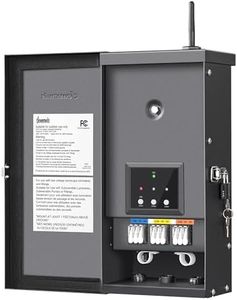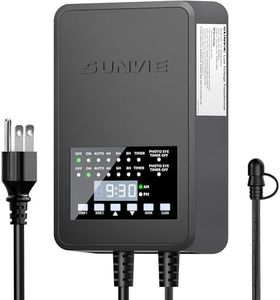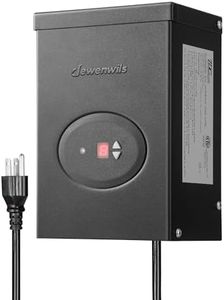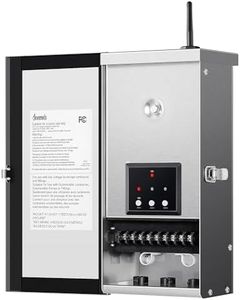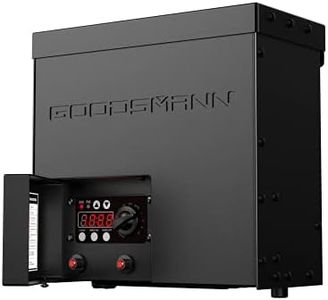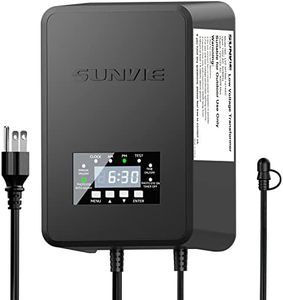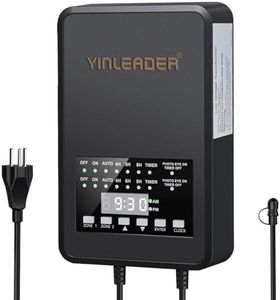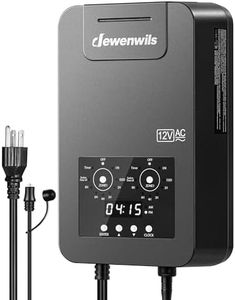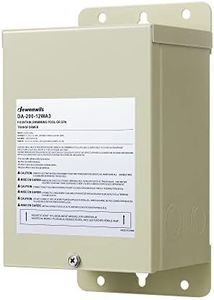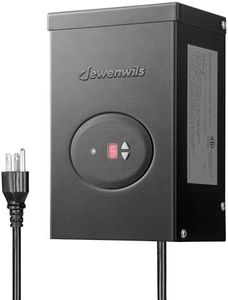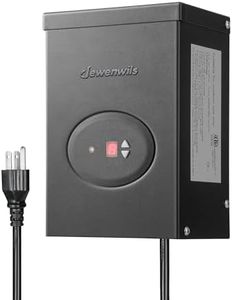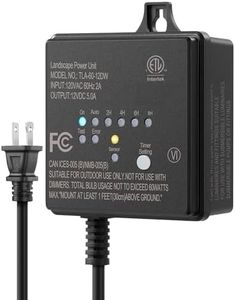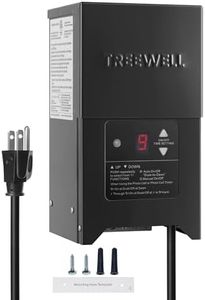We Use CookiesWe use cookies to enhance the security, performance,
functionality and for analytical and promotional activities. By continuing to browse this site you
are agreeing to our privacy policy
10 Best Outdoor Low Voltage Transformers 2025 in the United States
How do we rank products for you?
Our technology thoroughly searches through the online shopping world, reviewing hundreds of sites. We then process and analyze this information, updating in real-time to bring you the latest top-rated products. This way, you always get the best and most current options available.

Buying Guide for the Best Outdoor Low Voltage Transformers
Choosing the right outdoor low voltage transformer is crucial for ensuring that your outdoor lighting system operates efficiently and safely. These transformers are designed to convert standard household voltage to a lower voltage, which is safer for outdoor use and helps to extend the life of your lighting fixtures. When selecting a transformer, it's important to consider several key specifications to ensure it meets your needs and provides reliable performance.Wattage CapacityWattage capacity refers to the total amount of power the transformer can handle. This is important because it determines how many lights you can connect to the transformer without overloading it. Transformers come in various capacities, typically ranging from 100 watts to 1200 watts. To choose the right capacity, add up the wattage of all the lights you plan to connect and select a transformer that can handle at least that amount, ideally with some extra capacity to accommodate future additions.
Voltage OutputVoltage output is the level of voltage the transformer provides to your lighting system. Most outdoor low voltage transformers offer 12V or 24V outputs. The choice between 12V and 24V depends on the type of lights you are using and the distance from the transformer to the lights. 12V is common for shorter distances and smaller installations, while 24V is better for longer distances and larger setups as it reduces voltage drop.
Number of TapsThe number of taps refers to the different voltage outputs available on the transformer. Having multiple taps allows you to adjust the voltage to compensate for voltage drop over long distances. This is important for maintaining consistent brightness across all your lights. If you have a large or complex lighting setup, look for a transformer with multiple taps to ensure even lighting.
Timer and Photocell IntegrationTimer and photocell integration allows you to automate your lighting system. A timer lets you set specific times for your lights to turn on and off, while a photocell automatically turns the lights on at dusk and off at dawn. This feature is important for convenience and energy efficiency. If you want your lights to operate automatically without manual intervention, choose a transformer with built-in timer and photocell options.
Weather ResistanceWeather resistance refers to the transformer’s ability to withstand outdoor conditions such as rain, snow, and extreme temperatures. This is crucial for ensuring the longevity and reliability of your transformer. Look for transformers with a high IP (Ingress Protection) rating, which indicates good protection against dust and water. For outdoor use, an IP rating of at least IP44 is recommended.
Circuit ProtectionCircuit protection features, such as built-in circuit breakers or fuses, protect your transformer and lighting system from electrical faults like short circuits or overloads. This is important for safety and preventing damage to your equipment. Choose a transformer with adequate circuit protection to ensure safe operation and to protect your investment.
Most Popular Categories Right Now
